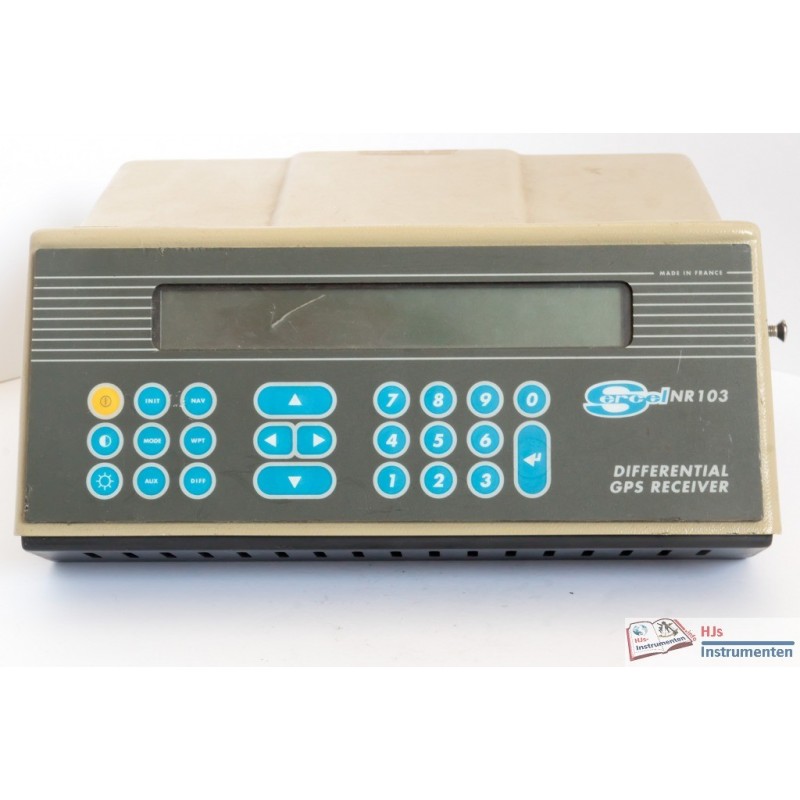

















Sercel NR103 10 channel GPS receiver.
Product details: Sercel NR103 | Sercel (Spectra Precision) | GNSS Receivers | | Material: Plastic
The Sercel NR103 was the first GPS receiver I ever laid my eyes on. No touching though. The unit was part of the instrument inventory at the Nautical College in Amsterdam where I studied Hydrography from 1991 to 1995. The unit had set the school back 40.000 guilders, around 20.000 euro's. What we did get to do was perform computations on the almanac it produced. It is possible that this unit is actually the same but I'm not certain altough this one does come from the MIWB, the successor to the course in Amsterdam. What i do know is that this is the 'expensive' version as it is equipped for DGPS using the Veripos HF correction signals back then. Those are gone today (replaced by satellite or internet corrections) but back then they improved the position accuracy from around 50 - 100 meters to around 5 meters (95% of the time).
I have used this same type when I did my traineeship in the Dutch Navy where it was ran together with the hyperbolic navigation system Hyperfix although when I did my traineeship in 1993 the DGPS was already the primary system. Later, during my studies in maritime electronics I got to service these units. I still remember one which, when opened, produced some insects which had hitchhiked this way to the Netherlands. The insects didn't survive though.
Nicolas de Hilster kindly donated a second instrument to my collection (a slightly more recent serial). A colleaque of mine commented on seeing the instrument that it was 'rather big' for a GPS and would probably contain mostly air. So with two instruments, I could now afford to open one up and as a result there are a number of photographs on the site showing that the box was far from empty... Back in those days GPS required serious processing power as shown in the pictures. There are four circuit boards. The top is power and the main oscillator. The next board is for the GPS reception with the third board the CPU processing all the information (and outputting it; this is the board with the LCD connector). The fourth and final board is an 'extra' and was used for the built-in HF reception and differential correction processing. Using the 'modem' port an external UHF receiver (NDR104) could be connected as well. All in all a serious piece of electronics in its day... But then, it sported all of 10 paralllel channels ánd differential in a single box.
Data sheet